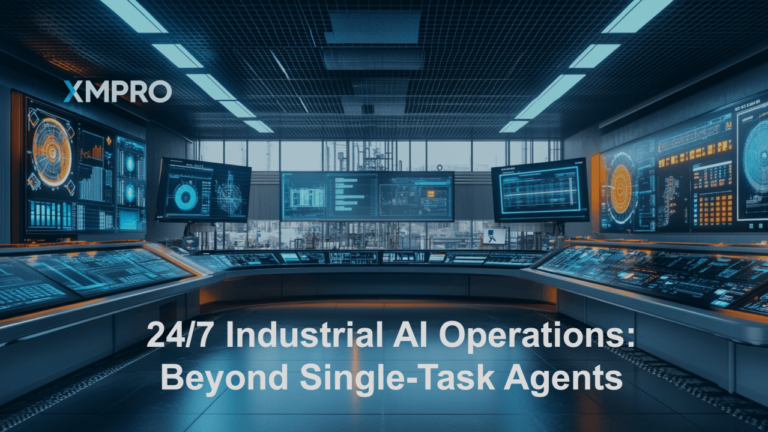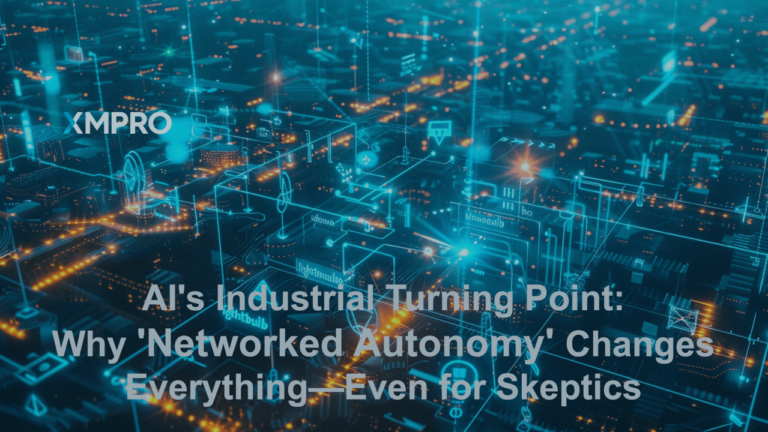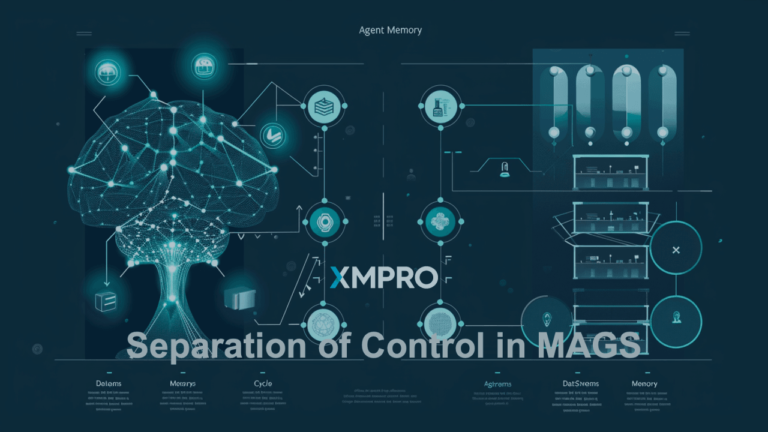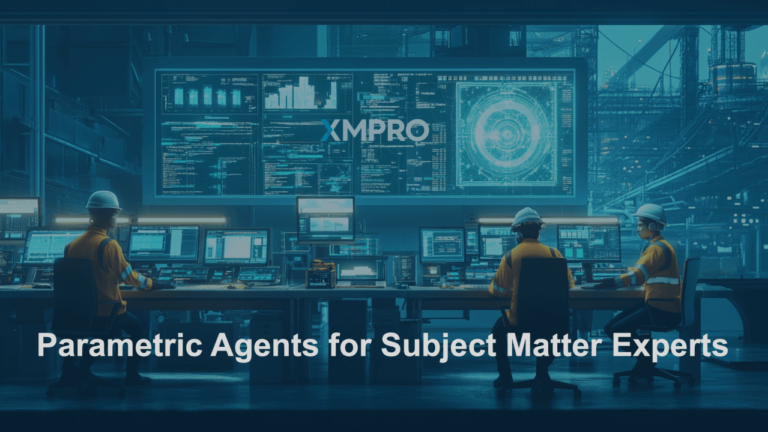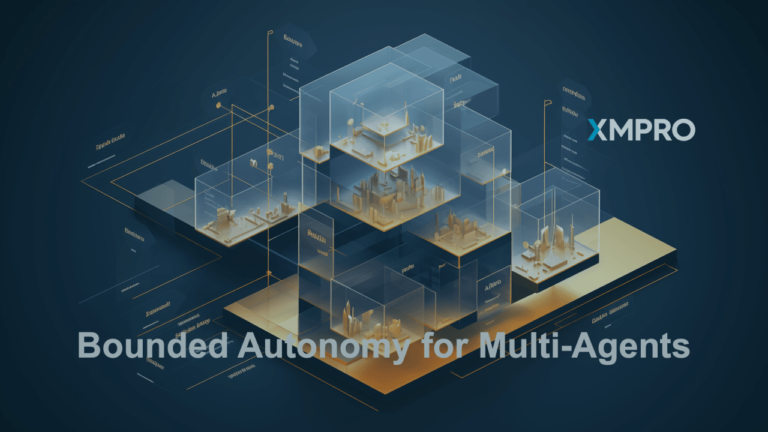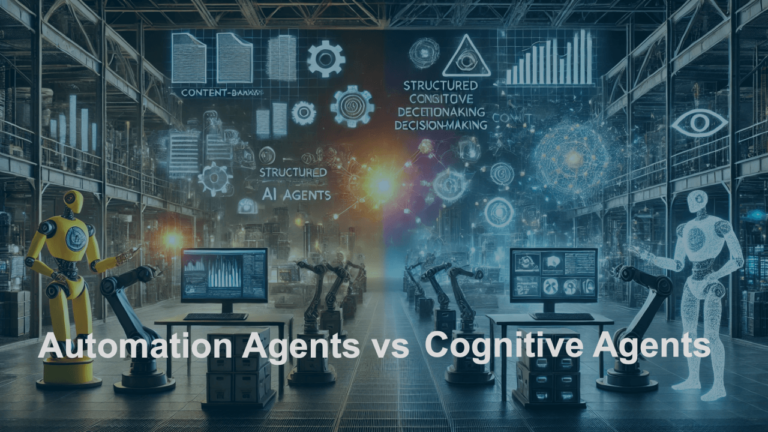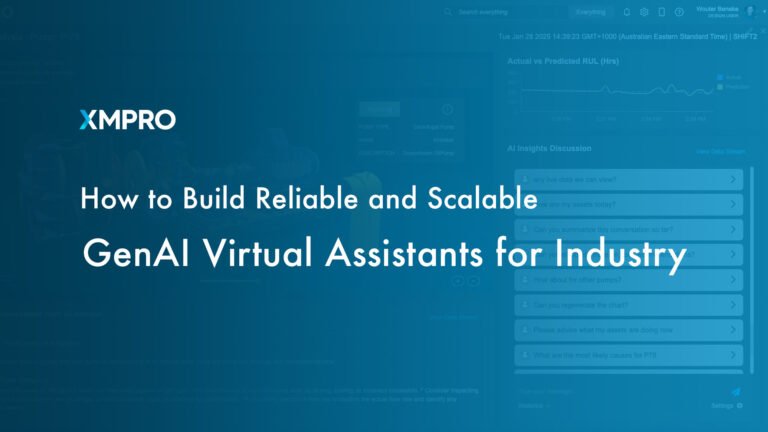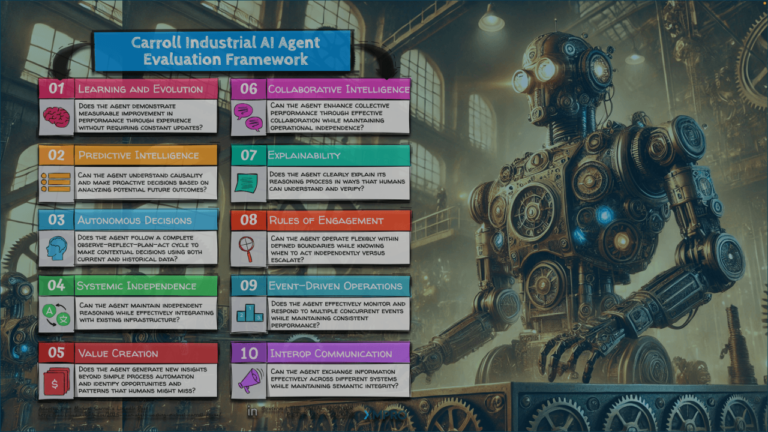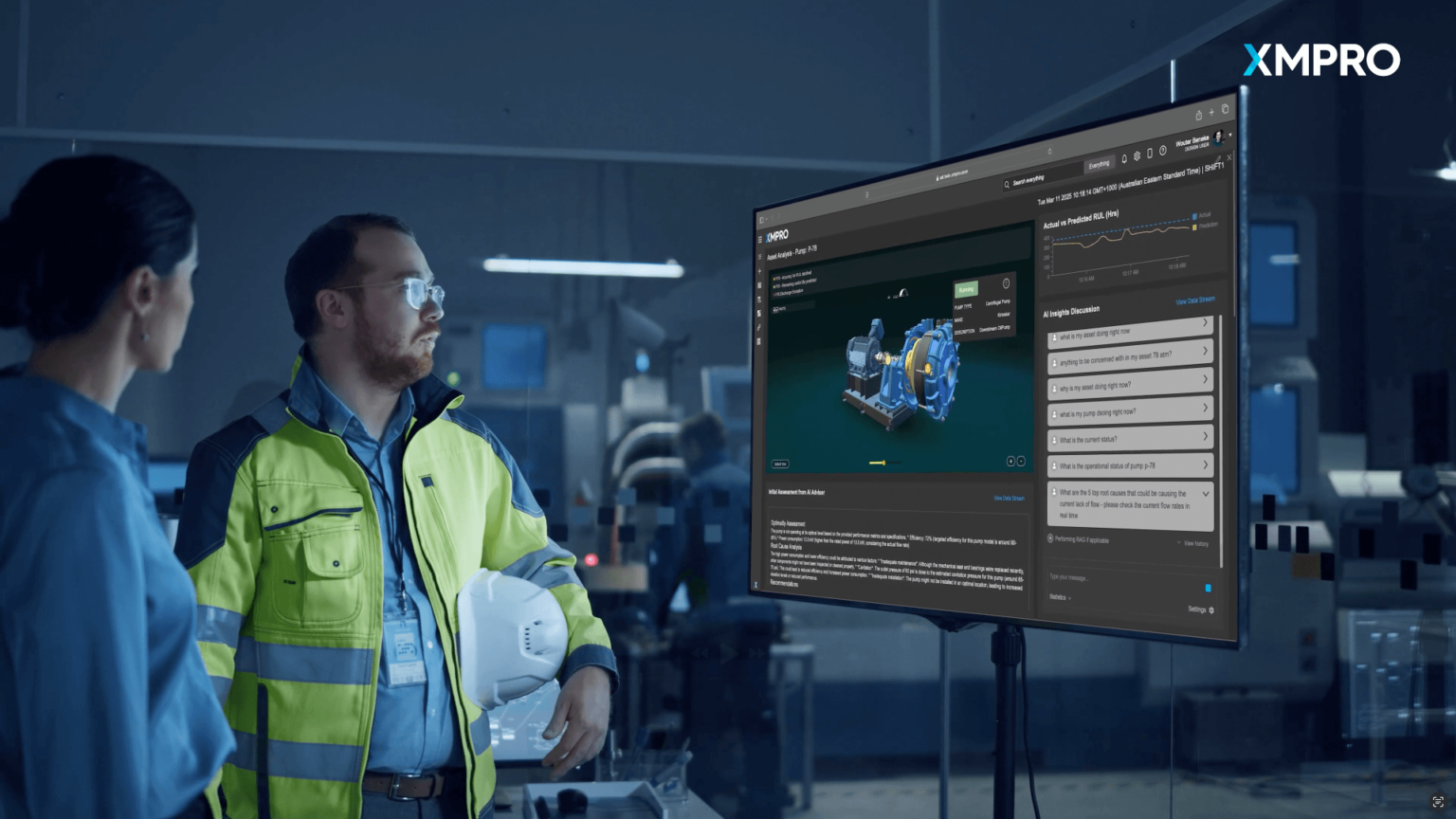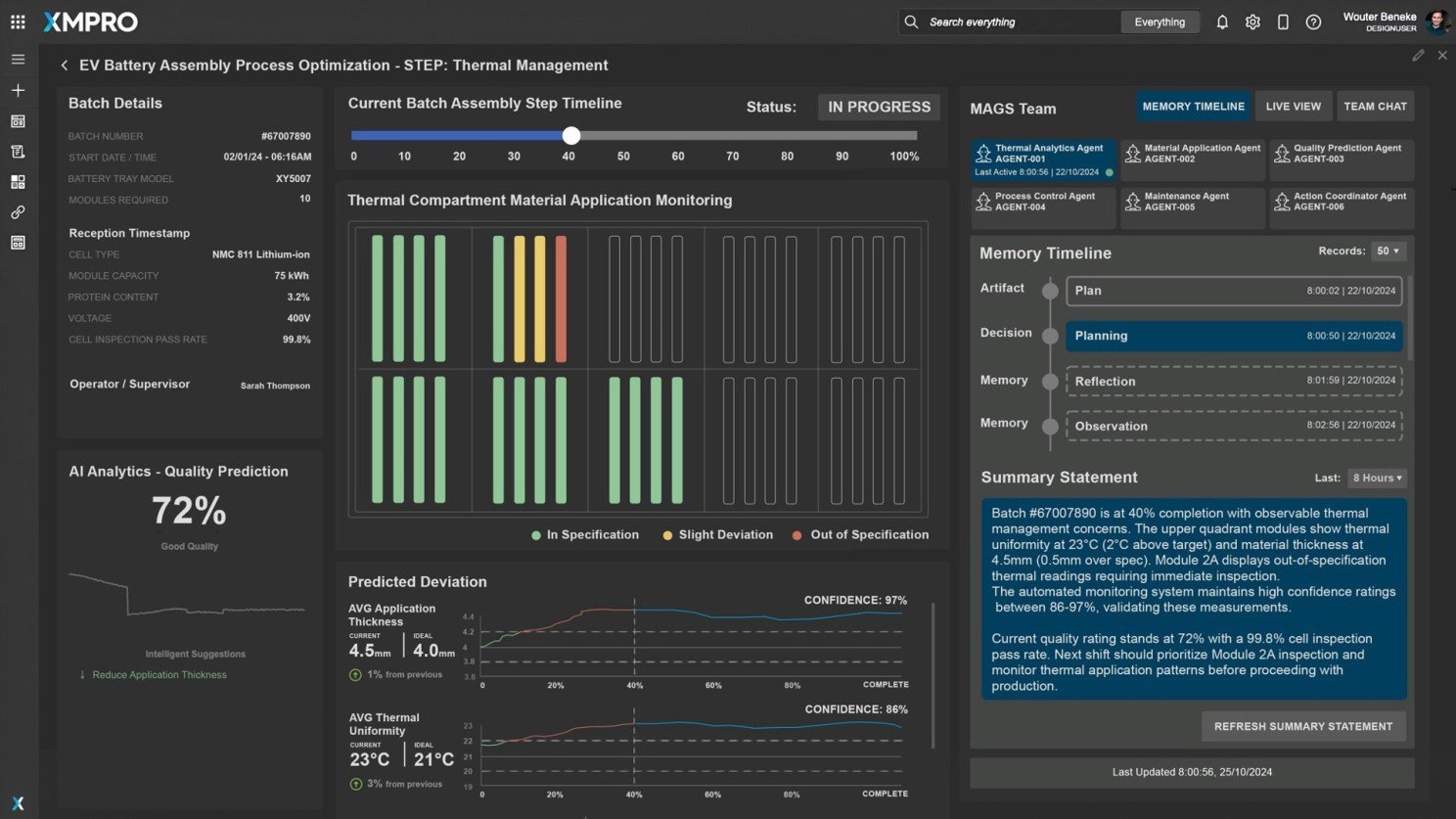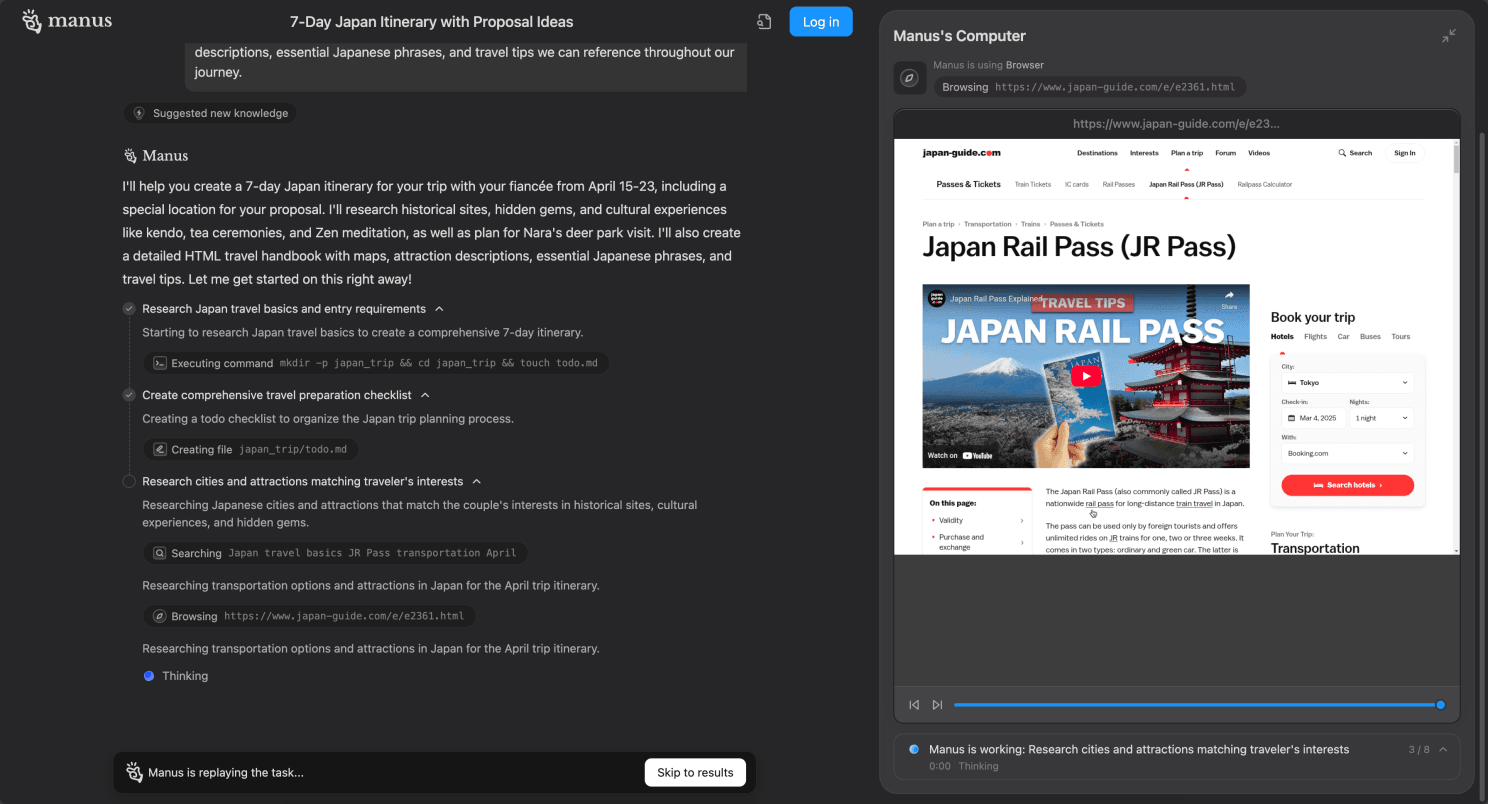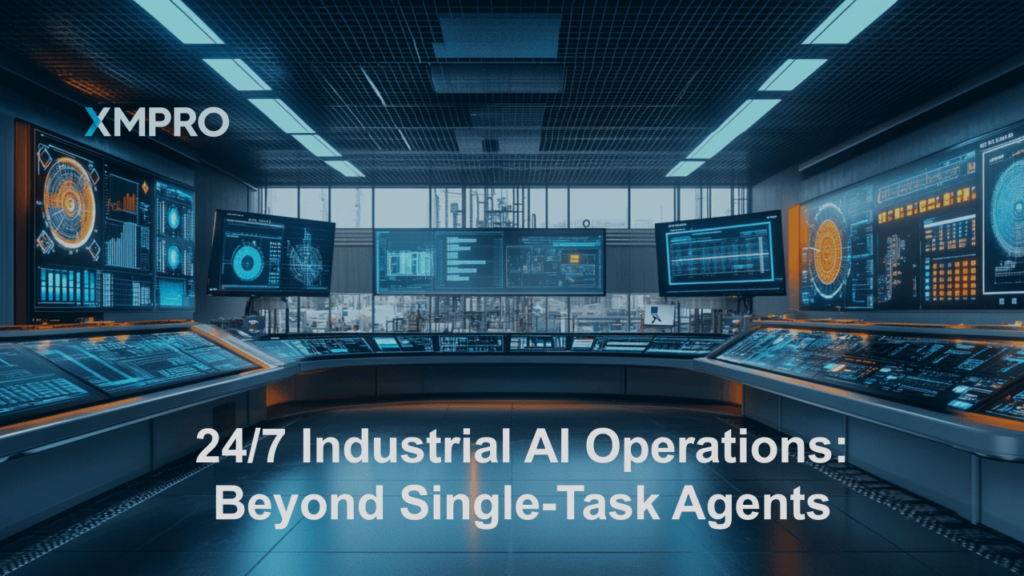

Pieter Van Schalkwyk
CEO at XMPRO
Introduction
The AI agent landscape is rapidly evolving, but with important distinctions emerging between different types of systems. While research agents like Manus AI generate buzz with their ability to handle discrete knowledge tasks, industrial operations require continuous, governed, and reliable AI systems. XMPro MAGS already provides a complete solution for industrial operations with its specialized agents, safety controls, and direct integration with control systems and business systems.
In this article, I’ll clarify the fundamental differences between XMPro MAGS and research-oriented agent systems like Manus AI. I’ll explain why XMPro’s approach delivers the reliability industrial operations require, while highlighting how its capabilities can actually extend to cover similar knowledge work when needed—all within a properly governed framework. For industrial leaders evaluating AI systems, understanding these distinctions is critical for making sound technology investments.
XMPro MAGS: Continuous Industrial AI Operations
XMPro MAGS delivers a complete industrial AI solution through its Multi-Agent Generative System.. It connects directly to control systems, processes sensor data, and makes decisions affecting physical equipment 24/7 based on operational context. Unlike research agents that handle discrete tasks on demand, XMPro MAGS agents continuously monitor operations, maintain equipment, and optimize performance without interruption.
XMPro MAGS Agent Team with 6 agents optimizing production process in real time
Most importantly, XMPro maintains strict separation between decision-making and execution through its DataStreams platform. This architectural choice isn’t arbitrary—it’s essential for safety in high-risk industrial settings where AI decisions can impact physical equipment, production schedules, and even human safety. The system’s governance framework ensures all agent actions remain within defined safety parameters.
XMPro MAGS handles industrial needs through its Observe, Reflect, Plan, and Act Memory Cycle. This structured approach enables agents to continuously monitor operations, identify anomalies, recommend improvements, and execute approved actions. Unlike one-off research tasks, these processes run autonomously around the clock, creating persistent value across shifts and throughout operational lifecycles.
In a follow-up article, I will show how XMPro Content Agents also act as on-demand knowledge agents, such as AI Experts, AI Assistants, and AI Advisors. These are three distinct patterns enabled by XMPro Content Agents, which differ from Operational Decision Agents.
Research Agents: Discrete Task Handlers
Systems like Manus AI and the OpenAI Agent framework represent a different approach to AI agents. These platforms excel at handling discrete, one-time research and knowledge tasks rather than continuous operations. They’re designed to be triggered by a specific user query, perform a sequence of actions to gather information or create content, and then deliver a final result.
Analysis of Manus AI’s use cases confirms this approach. Their website showcases capabilities like “Trip to Japan in April” (creating a one-time travel itinerary) or “Deeply Analyze Tesla Stocks” (producing a single analysis). These are valuable discrete knowledge tasks, but fundamentally different from ongoing operational monitoring and control that industrial systems require.
Manus AI example of planning a trip to Japan, writing code to create a web app
Research agents typically lack the governance frameworks, continuous monitoring capabilities, and separation of control that industrial environments demand. Without an API (Manus AI currently has no public API), these systems cannot be integrated into enterprise workflows for continuous, automated operations. They remain primarily interactive tools for on-demand human-initiated tasks.
Key Differences in Design and Purpose
The distinction between XMPro MAGS and research agents reflects fundamentally different design goals:
- Operational model: XMPro MAGS runs continuously and autonomously 24/7, while research agents operate on demand for specific user requests.
- Governance approach: XMPro maintains strict separation between decision logic and execution capabilities, while research agents often combine these functions with fewer constraints.
- Integration capability: XMPro integrates directly with industrial control systems through structured interfaces, while research agents often lack enterprise-grade integration capabilities or APIs.
- Persistence: XMPro agents maintain continuous awareness and learning across operational cycles, while research agents typically handle each task as a separate instance.
- Risk management: XMPro’s architecture prioritizes safety and control in high-consequence environments, while research agents are typically designed for lower-risk knowledge work.
For industrial operators, these distinctions are critical. A research agent might effectively answer a specific question about equipment specifications, but it cannot continuously monitor that equipment for anomalies, coordinate maintenance schedules, or execute control adjustments within safety parameters.
XMPro’s Complete Industrial AI Framework
What many don’t realize is that XMPro MAGS and XMPro DataStreams together can actually create capabilities similar to research agents when needed, but with proper governance built in. XMPro’s architecture allows for knowledge tasks like research, analysis, and even code execution—but always within a framework that maintains separation between decision-making and action.
For example, XMPro can incorporate:
- Web research capabilities through controlled connectors
- Document analysis through structured processing blocks and content agents
- Code execution in governed sandbox environments
- External API integration through managed connections
The key difference is that XMPro implements these capabilities with enterprise-grade governance. When an XMPro agent needs to execute Python code for an engineering calculation, that code runs in a controlled environment with proper permission management, not in an unrestricted sandbox. This architectural choice maintains safety while still enabling advanced capabilities.
The Governance Imperative for Industrial AI
Without proper governance frameworks and separation of control, AI systems present significant risks in industrial environments. This isn’t just a technical preference—it’s an operational necessity.
Consider what happens when AI systems can create machine instances on demand without governance: potential security vulnerabilities, uncontrolled resource consumption, and potential operational disruptions. Without separation between decision logic and execution, a single flawed reasoning chain could lead to direct impacts on critical systems.
XMPro’s approach prevents these risks through:
- Clear rules of engagement for all agent actions
- Separation of control from execution through DataStreams
- Audit trails for all decisions and actions
- Permission management for all resource access
- Controlled interfaces to operational systems
This governance framework doesn’t limit capability—it enables reliable operation in environments where failures have real consequences. Research agents can afford to follow more permissive models because their tasks generally have lower consequences of failure.
Practical Implications for Industrial Leaders
For industrial executives evaluating AI systems, understanding these distinctions leads to several practical considerations:
When continuous operation matters: If your operation requires 24/7 monitoring and response, research agents that handle discrete tasks cannot meet this need. You need a system designed for continuous operation like XMPro MAGS.
When integration with control systems is needed: Research agents typically lack the enterprise integration capabilities required to connect directly with industrial control systems, SCADA, or IoT devices.
When governance is non-negotiable: In regulated industries or operations where safety is critical, proper governance frameworks aren’t optional. Systems that combine decision logic and execution capabilities create unnecessary risks.
When knowledge tasks are part of operations: Even when specialized knowledge tasks are needed, these can be incorporated into industrial AI frameworks with proper governance, rather than creating separate systems with different risk profiles. You can even employ solutions like Manus AI (when it gets an API) as a “contractor” in XMPro’s governed agent environment.
Conclusion: Purpose-Built AI for Industrial Needs
XMPro MAGSprovides a complete foundation for industrial AI needs, built specifically for continuous operation in environments where reliability, safety, and governance are essential.
XMPro MAGS is not just Generative AI, but these agents are grounded and supported by a range of AI capabilities that I describe as Composite AI and explained in this earlier article.
While research agents like Manus AI offer impressive capabilities for discrete knowledge tasks, they fundamentally serve a different purpose and lack the architectural features required for industrial operations.
When evaluating AI systems for industrial use, leaders should look beyond flashy demos and one-time tasks to examine how systems will perform continuously in production environments. The ability to handle a single research question effectively doesn’t translate to the ability to manage continuous industrial processes safely.
The future of industrial operations belongs to properly governed, continuously operating AI systems that maintain strict separation between decision-making and execution. XMPro MAGS delivers this approach today, providing industrial organizations with AI capabilities that meet their unique requirements for safety, reliability, and continuous operation.
Pieter van Schalkwyk is the CEO of XMPro, specializing in industrial AI agent orchestration and governance. Drawing on 30+ years of experience in industrial automation, he helps organizations implement practical AI solutions that deliver measurable business outcomes while ensuring responsible AI deployment at scale.
About XMPro: We help industrial companies automate complex operational decisions. Our cognitive agents learn from your experts and keep improving, ensuring consistent operations even as your workforce changes.
Our GitHub Repo has more technical information if you are interested. You can also contact myself or Gavin Green for more information.
Read more on MAGS at The Digital Engineer










